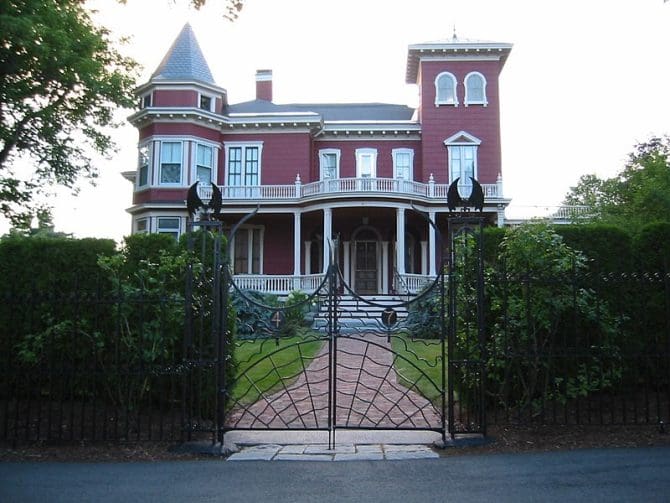The monarchs came from the direction I had arbitrarily decided was the south - the direction I'd come from. They darkened the darkening sky in a cloud below the clouds. They settled on the church-type building across the way, on a few standing chimneys, on piles of rubble, and on the roof of the storage shed where Radar and I had taken shelter. The sound of them settling up there - there must have been thousands - was less a fluttering than a drawn-out sigh.
Stephen King is showing no signs of slowing down. In the last year he's turned seventy-five and released a staggering four new books - Billy Summers, Gwendy's Final Task (with Richard Chizmar), Later and Fairy Tale.
King's version of a fairy tale has the reader believing that all this world's fables and legends come from another dimension (the land of Empis). In our world the more frightening elements are watered down for children but can still found in the original versions written by the Brothers Grimm.
In this story there's a handsome prince, Charlie Reade. I love the serendipity of 'Prince Charlie.' Charlie is not the hero of the story, however. Charlie, as they say in the song, makes a deal with God. Had Stephen King been watching Stranger Things when he wrote this?
He prays for his father to beat alcoholism, offering repayment to the Almighty.
The call comes in the form of being a good Samaritan: when he hears a dog howl, Charlie goes to help, finding its owner, Howard Bowditch, has fallen from a ladder. While helping Mr Bowditch recover Charlie proves himself and gets the lion's share: treasure that comes with much responsibility - including the elderly dog, Radar (who we all fall in love with).
The story revolves around the dog, an aging German Shepherd. Charlie must take her on an adventure to save her life before the old girl turns up her claws - down a spiral stair under Mr Bowditch's shed to the other world, where there is an enchanted sundial capable of reversing the aging process. King gives the old dog a lot of expression. She's a fully realised character who may or may not be modelled on his own dog, Molly (aka the Thing of Evil).
There are so many fun elements to this book: an enchanted city not unlike the city in The Dark Tower's Wizard and Glass (or The Wizard of Oz), an old woman who repairs shoes, a royal family under an enchantment, a curse on the land, dwarves, a woodsman and a forest - core for fairy tales - a field of poppies (Oz again) and various outsized scary creatures - bats, cockroaches, wolves that sing to two moons, zombie soldiers, just to name a few.
The houses were empty. The windows stared. Crows - not gigantic, but mighty big - strutted through run-to-seed front gardens, picking at seeds or any leftover bright thing. There were flowers, but they looked pallid and somehow wrong. Vines like clutching fingers crawled up the sides of slumped cottages. I passed a strangely askew building with crumbling limestone peering through what remained of the plaster facing. Swinging doors hung ajar, making the entrance look like a dead mouth...A shatter of glass lay on the road in front.
King also includes references to stories we know and love from his impressive canon of work and that of Lovecraft, Poe and other classic horror writers. Charlie rides a Schwinn bicycle (IT), Bowditch's old gun looks like it belonged to a gunslinger, there are things that skitter in the 'eldritch' land of Empis and themes that constant readers are familiar with - the loss of a loved one, a character fighting alcoholism (King struggled with this himself) and good old good vs evil. Each chapter opens with a drawings by Gabriel Rodriguez (Locke and Key) with wee summaries that remind me of Kipling's Jungle Book.
Are these conscious additions, or unconscious? I think the former, as I once read that in a story every detail is intended.
The curse on the land of Empis is known as 'the grey.' Not only a creeping blight on the land, rendering everything growing bar the poppies, to dust, it's fatal to humans: turning their skin grey. Their faces - this is the horrific bit - coming undone: eyes and mouths recede to slits. The royal family escape this fate, but each has once of their five senses removed and it ain't pretty.
King's work is often held up as an example of great characterisation. He spends some time laying the foundations of this tale and as a reader I didn't mind, I enjoyed it. Having read many of his more 'straight' novels where the fantasy element is understated, eg Billy Summers, the Bill Hodges trilogy (Mr Mercedes), getting to know the characters and setting is very much part of the story.
The characters in Empis, although very weird, are examples says King, through Charlie, of how adversity brings out the best in people.
There's Dora, with her face sliding off, the 'googir', with only a hole the size of a straw for a mouth, and on the other side, there's Howard Bowditch, perhaps a developed version of Mr Harrigan from When It Bleeds?
He gave me his patented was-you-born-stupid look. "That's different. Radar is a dog. She'd shit on the lawn in front of the Eiffel Tower if you let her." I found this mildly interesting. "Is there a lawn in front of the Eiffel Tower?" Now came the patented Bowditch eye-roll. "I don't know. I was making a point. Can I have a coke?"
There's no Wizard in this OZ. There is a many-tentacled monster under the city though, and you don't...
want...
to...
wake it...
UP! Shhh...
I was as bereft as Charlie when he left Empis, as I had no more book. As they say in the Dark Tower, "There are other worlds than these."





Add a comment to: Happy Halloween: Stephen King’s Fairy Tale is pretty Grimm